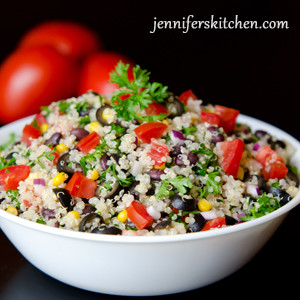9 Tips to Help Your Child Like Healthy Foods
Most 3-year-olds don’t naturally love turnips, Brussels sprouts, and cauliflower. Unless you apply my special tips. Here’s how to get your child to eat healthy foods.

Have you ever bribed your child to eat her broccoli? Or pleaded with him to eat his peas? It seems that most three- and four-year-olds don’t naturally love turnips, Brussels sprouts, and cauliflower. This fact, of course, can lead to problems at the dinner table.
Over the years I have had many people ask me, “How did you get your children to eat so well?” So, I’m sharing a few of my secrets for changing veggie status from enemy to friend.
How to Get Your Child to Eat Healthy Foods
Tip #1
Evict the junk food.
The first things you can do is get the junk food out of the house. If you don’t keep sugary snacks and other junk food in the house, your child will learn to not ask for it, because it’s simply not an option. Stock the pantry and frig with lots of healthy choices instead.
In a recent study, researchers found that children ate more junk food when it was available, and they ate more fruits and vegetables when they were offered more fruits and vegetables! This is the first step for getting your child to eat healthy foods. It can be that simple!
Which brings us to the second tip …
Tip #2
Offer healthy foods.
Even if you know that your child doesn’t like a particular food, offer it anyway – as if you’re sure he’ll want it. If he says no, that’s OK; someday he may say yes.
Children’s tastes do change, but we don’t give that opportunity if we don’t offer the food.
Tip #3
Be careful what you say.
Never mention the child’s likes and dislikes in front of the child. Kids catch on quickly, and if you are positive and don’t talk about his or her dislikes, soon your child may not either.
Tip #4
Eat healthy yourself.
According to research, one of the most successful methods for encouraging kids to eat healthfully is role modeling.
Tip #5
Eat on schedule.
Research also shows that children who eat meals on a regular schedule are more likely to enjoy vegetables, fruits, and whole grains.
Tip #6
Avoid snacks.
I know this goes against what we often hear, but the truth is that no matter how healthy the snack is, eating in between meals is not only a burden and strain on the digestive system and the endocrine system, but it tends to lessen the appetite for nourishing food at mealtime.
Tip #7
Limit TV time.
Research clearly shows that the more media children consume, the more junk food they consume as well – both in front of the TV and when away from the set. It’s hard to tell your kids, “No, you can’t have that crunch and smack snack bar” when they are bombarded with media messages that this is THE food to eat!
Tip #8
Make the dinner table the no-pressure zone.
Ironically, the best way to get a child to eat is to not try to get the child to eat. The concept of “the greater the persistence, the greater the resistance” is, more often than not, applicable here.
Simply serve the meal with at least a couple healthy and tasty options, and then relax, allowing your child to choose to eat or not. Don’t offer to substitute an alternative when your child refuses to eat what is served. And don’t offer a snack later.
NOTE: This does not mean that you should force a child to eat something he/she doesn’t like. If a child truly dislikes a food but is forced to eat it, the food will not digest well, and therefore the child does not get the nutrition he should from that food. For example, if your child does not like salad, don’t force him/her to eat salad. But be sure to provide another vegetable (such as broccoli with cheese sauce) The, if your child still doesn’t want to eat, don’t worry. He will be hungry for the next meal.
And, as difficult as it may be, don’t stress if it doesn’t seem like your child isn’t getting enough to eat. Contrary to what many parents fear, a child will not starve himself if he has reasonable options available to him.
If your child does not eat in between meals and does not fill up on junk food, then he or she will eat as much as he or she needs – without your pleading.
Tip #9
Talk.
And finally, take the time to talk to your child about why healthy food is good for our bodies. Children are smart and an appreciation for healthful foods is something that can be learned. Education can make a big difference.
It takes effort to help your child learn good habits, but it’s so very worth it.
You my also like:
Before you go . . .
Did you know that you can eat all this delicious food AND lose weight? You can!
No calorie counting. No portion sizes.
Join my online weight loss program today!







This is great advice. I wish more parents would follow this. And the pictures are cute too!
Very Useful for everyone